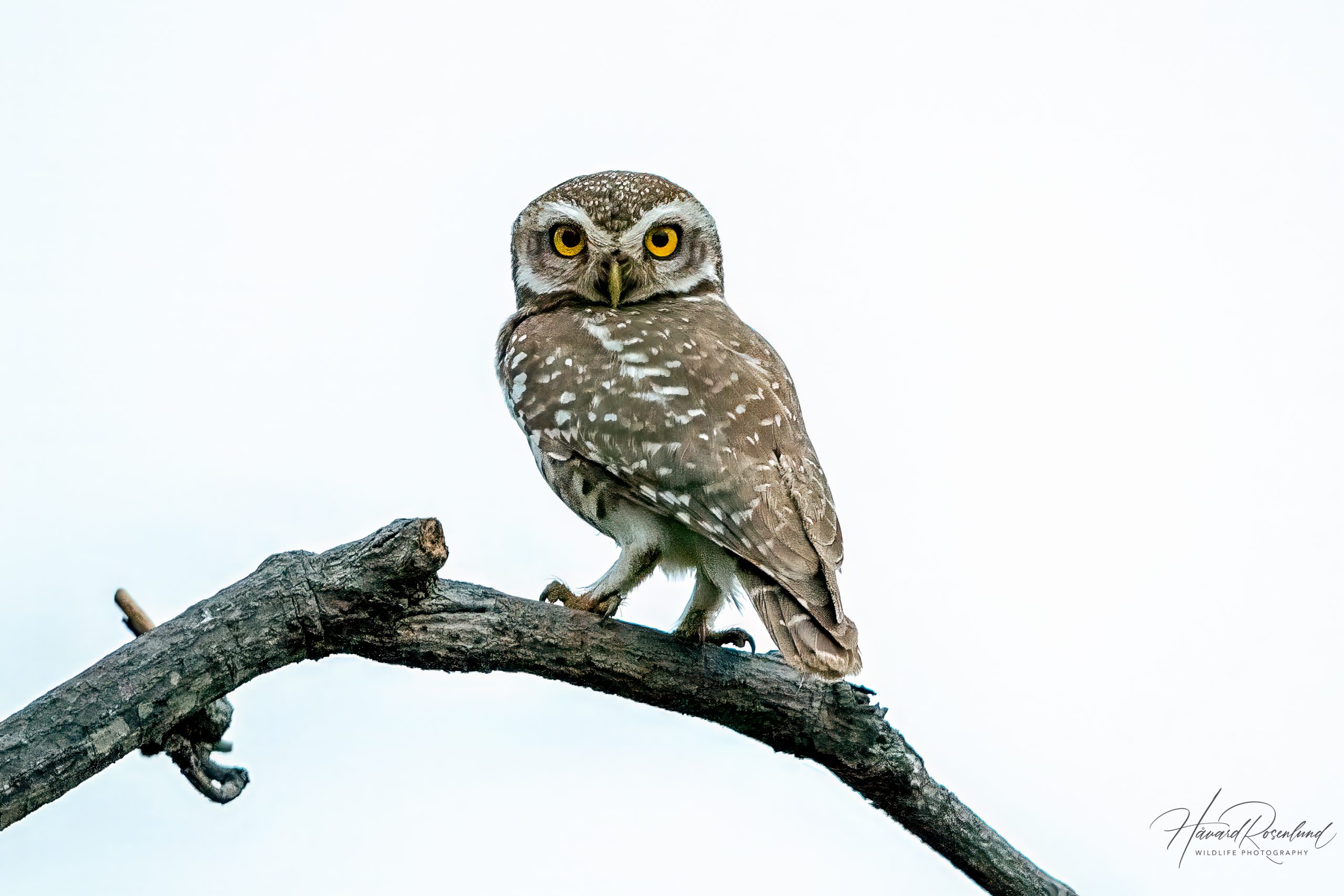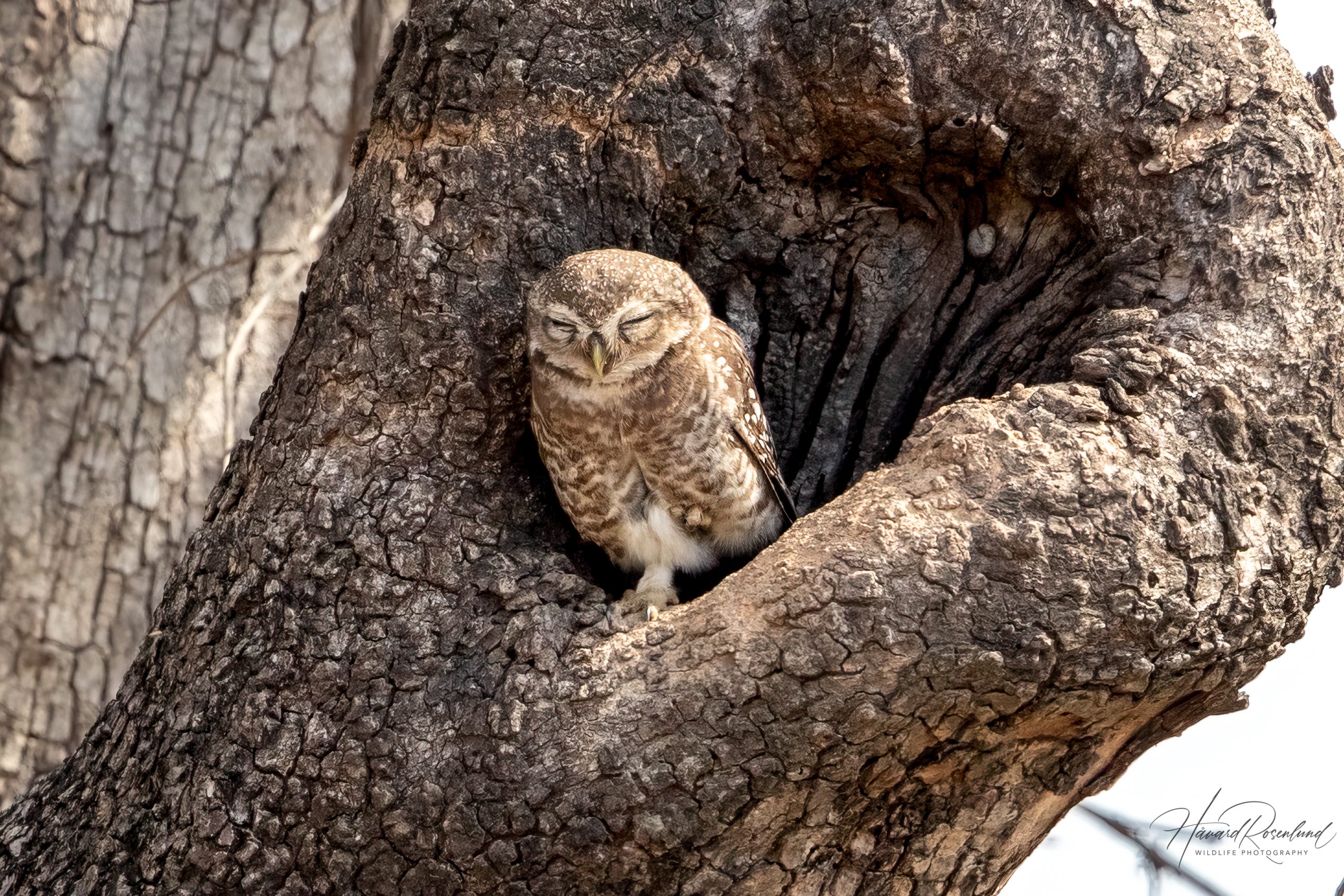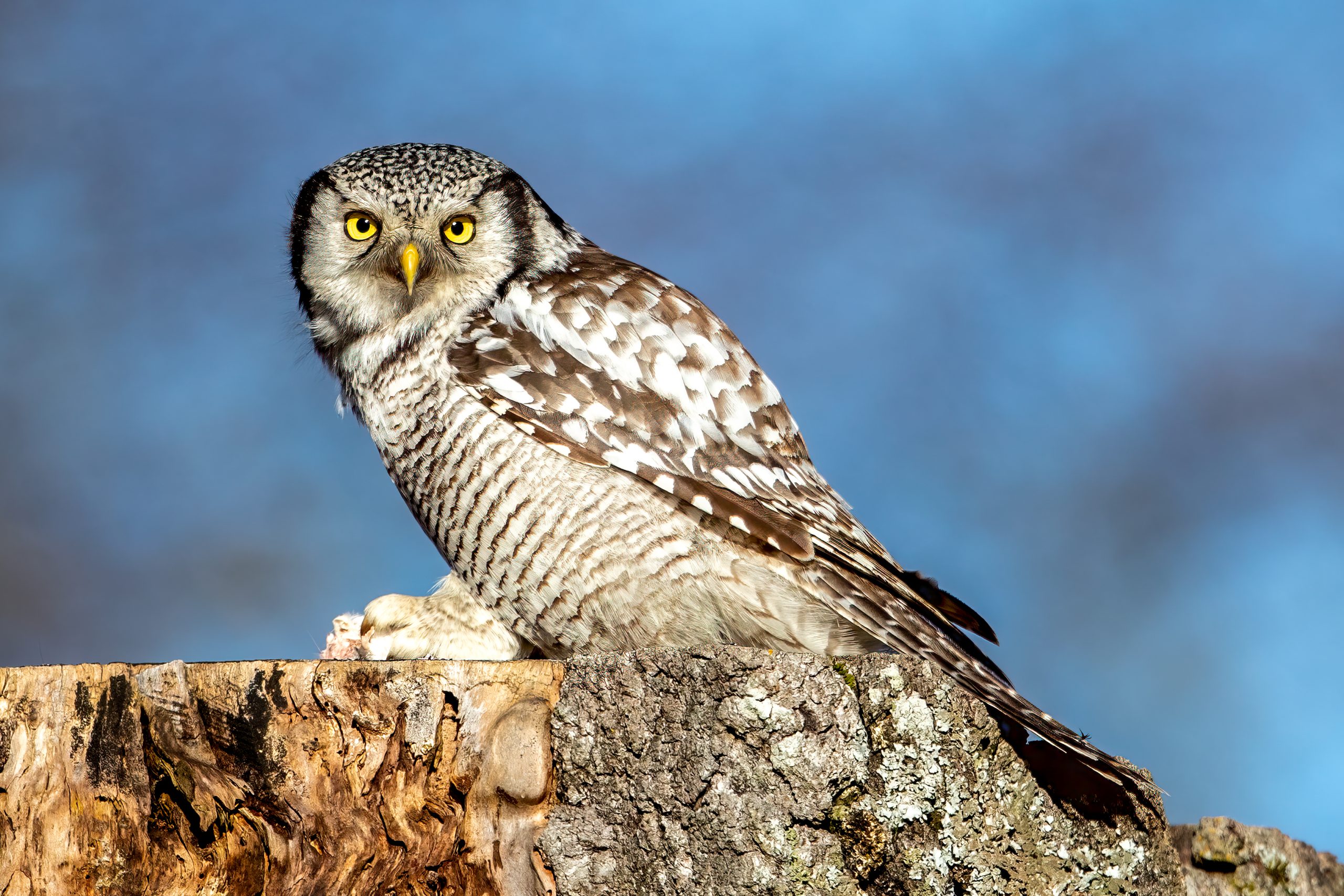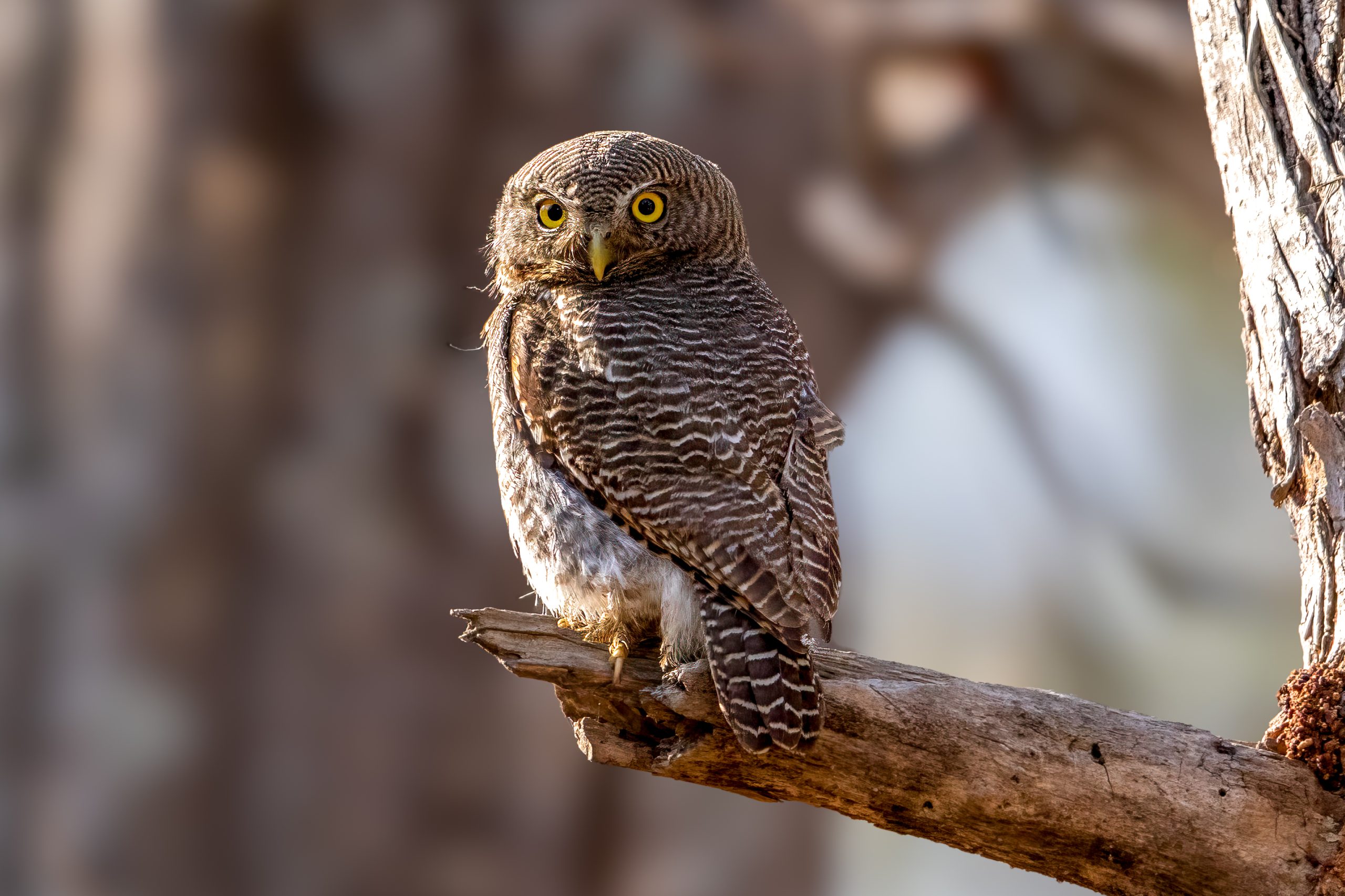Description
The spotted owlet (Athene brama) is a small owl species found in South and Southeast Asia. It typically measures about 21 cm (8 in) in length with a wingspan of approximately 50-55 cm (20-22 in). It is characterized by its rounded head, lack of ear tufts, and distinctive white spots on its greyish-brown plumage. Undersides are white with darker bars. The facial disk is pale with well defined and distinct white eyebrows and it has a prominent white neckband. It has yellow eyes and a greenish-yellow beak. It is similar to the little owl (Athene noctua), which is somewhat larger, more spotted than barred on the undersides, and warmer brown than the spotted owlet.
Diet & habitat
Spotted owlets inhabit a variety of environments including open forests, agricultural fields, urban areas, and rural regions. They prefer habitats with plenty of tree cover and are often found in parklands and gardens. Their diet mainly consists of insects, small mammals, birds, and reptiles. They are skilled hunters, often seen perched silently before swooping down on their prey. They hunt mostly after dusk and before dawn, using their keen eyesight and hearing to locate and capture their meals.
Behavior
Spotted owlets are known for their bold and curious nature, often seen during the day perched in open areas or cavities. They are generally solitary or found in pairs, though small family groups can also be observed. Their calls are a series of shrill, repetitive notes that are often heard at night. They display territorial behavior, defending their nesting sites vigorously against intruders. Spotted owlets are also known to exhibit playful behavior, particularly the juveniles who engage in various antics around their nesting areas.
Nesting
The breeding season for spotted owlets varies with region, but typically occurs between November and April. They nest in tree cavities, abandoned buildings, or any suitable sheltered spot. The female typically lays 3-5 white eggs, which she incubates for about 30 days. During this period, the male provides food for the female and later for the chicks. The young owlets fledge approximately 4-5 weeks after hatching, but they continue to depend on their parents for food and protection for a few more weeks until they become fully independent.
Status
The spotted owlet is classified as least concern by the IUCN due to its wide range and stable population. However, it faces threats from habitat loss and degradation due to urbanization and agricultural expansion. Despite these challenges, the species has shown remarkable adaptability to human-altered landscapes, often thriving in close proximity to human habitation.








